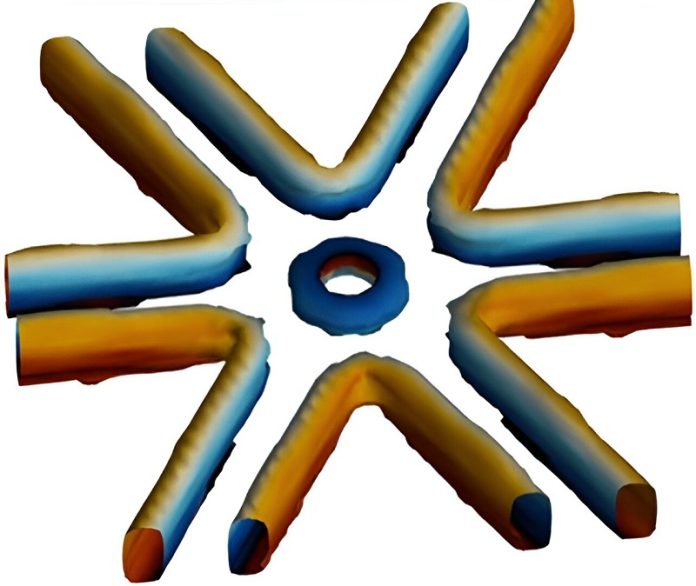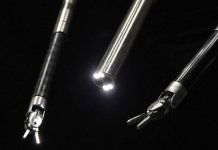
Scientists have made an exciting discovery that could help advance quantum computing.
When photons, which are particles of light, collide, they create vortices.
Vortices are spinning structures that are common in nature, like in galaxies, tornadoes, hurricanes, or even the water draining from a bathtub.
Normally, vortices form when fast-moving air, water, or another substance meets an area with slower movement.
They are characterized by circular flow around a stationary axis and help balance the tension between areas with different flow speeds.
A new type of vortex was discovered by Dr. Lee Drori, Dr. Bankim Chandra Das, Tomer Danino Zohar, and Dr. Gal Winer from Professor Ofer Firstenberg’s laboratory at the Weizmann Institute of Science.
Their study was published in the journal Science.
The researchers were looking for better ways to use photons in quantum computers when they stumbled upon this discovery. They found that when photons interact, they create vortices. This adds to our understanding of vortices and might help improve data processing in quantum computers.
Photons, which behave like both particles and waves, usually don’t interact unless there’s some matter to help. In their experiment, the researchers created a unique environment using a 10-centimeter glass cell with tightly packed rubidium atoms forming a small, dense gas cloud about 1 millimeter long.
The scientists fired photons through this gas cloud and observed how they changed after passing through it. They found that when photons passed through the dense gas cloud, they excited some rubidium atoms into a state called the Rydberg state.
In this state, an electron in the atom moves in a much wider orbit, creating an electric field that affects many nearby atoms, forming an “imaginary glass ball.”
This glass ball environment causes a second photon to slow down as if it were passing through actual glass. When two photons pass close to each other, they slow down more than if they were traveling alone.
This change in speed alters the peaks and valleys of their wave patterns. In the best case for quantum computing, the wave patterns of the two photons become completely inverted, a phenomenon known as a 180-degree phase shift.
The researchers’ work, which included Dr. Eilon Poem and Dr. Alexander Poddubny, began eight years ago and has seen two generations of doctoral students.
They created a dense, ultracold gas cloud packed with atoms and achieved something unprecedented: photons undergoing a 180-degree phase shift, and sometimes even more.
At the densest points of the gas cloud, the mutual influence between photons was strongest. But as photons moved away from each other or the atomic density decreased, the phase shift weakened and disappeared.
Surprisingly, when photons were a certain distance apart, pairs of vortices formed. In these vortices, the photons completed a 360-degree phase shift, with almost no photons at the center, similar to the dark center seen in other vortices.
To visualize photon vortices, imagine dragging a vertically held plate through water. The fast-moving water pushed by the plate meets the slower-moving water around it, creating two vortices that move together on the surface, forming a three-dimensional vortex ring.
Similarly, the researchers found that introducing a third photon created a three-dimensional vortex ring, showing the similarities between these new vortices and those in other environments.
Despite the focus on vortices, the researchers continue to aim for better quantum data processing. The next step is to fire photons into each other and measure each photon’s phase shift separately.
Depending on the strength of these phase shifts, photons could be used as qubits, the basic units of information in quantum computing. Unlike regular computer memory, which can be either 0 or 1, qubits can represent a range of values between 0 and 1 simultaneously. This discovery could pave the way for more advanced quantum computers in the future.
Source: Weizmann Institute of Science.



